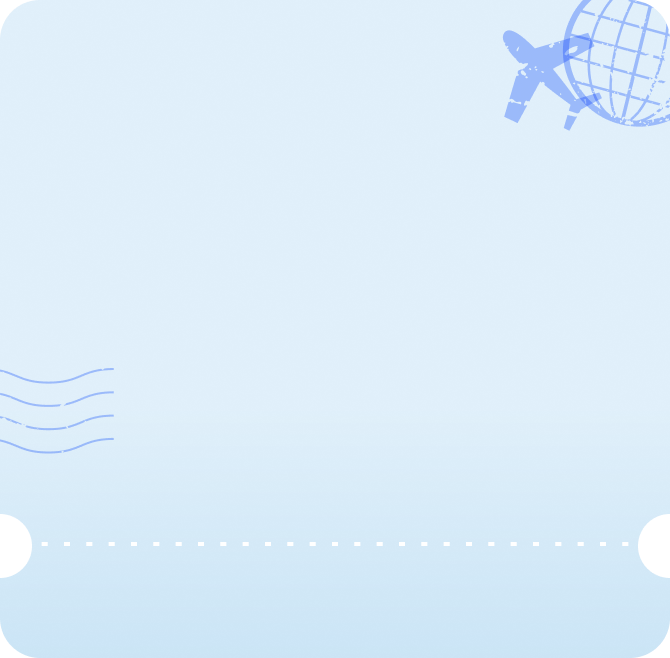When Is the Best Time to Buy Plane Tickets?
If you’ve ever booked a flight and then seen the fare drop days later, you’re not alone. Airfare pricing is constantly in flux, and unfortunately, there’s no universal answer that applies to every route or region. The best time to buy plane tickets often depends on where you're flying from, your destination, the time of year, and even local travel habits.
Still, patterns do emerge. This guide breaks down the timing strategies that tend to offer the best value, whether you're planning a quick regional trip or a long-haul international journey.
Domestic Travel (US)
For most domestic trips, airfare tends to hit its lowest point between one and three months before departure. Booking too early can mean paying more than necessary, and waiting until the last minute usually leads to higher fares.
Your best bet? Aim for the sweet spot around 35 to 85 days out.
International Travel
International bookings require a bit more lead time. Here's a rough guideline:
- Short trips abroad (like Mexico, Canada, or the Caribbean): 3 to 8 weeks before you fly.
- Long-haul destinations (Europe, Asia, Oceania): 5 to 7 months ahead tends to unlock better deals.
- Holiday periods (Thanksgiving, Christmas, Spring Break): Plan as early as possible as prices spike fast, and options disappear even faster.
If you're traveling during peak vacation months (June to August or late December), it's smart to book even earlier up to six months ahead if you can.
Is There a Best Day of the Week to Book?
People used to swear by booking flights on Tuesdays. That’s not really the case anymore.
Today, airfare pricing shifts multiple times a day, thanks to dynamic pricing algorithms that track demand and competition. That said, some trends do emerge:
- Sundays sometimes show slight savings especially on international flights. But it’s not consistent enough to plan around.
- The best deals usually appear within your ideal booking window, regardless of the weekday.
In short: don’t wait for Tuesday deals. Focus on timing your purchase, not the calendar day.
Cheapest Days to Fly (Not Buy)
When you travel often matters more than when you book.
- Wednesdays are typically the cheapest day to fly.
- Tuesdays and Saturdays also tend to offer lower fares.
- Fridays and Sundays are the most expensive. Everyone’s traveling for the weekend.
If you’re flexible with your departure and return dates, adjusting your schedule by just one day can make a major difference in cost.
Seasonal Booking Strategy
Airfare fluctuates not just based on how far out you book but also what time of year you're flying:
| Season | Best Booking Time |
| Spring | 2-4 months prior |
| Summer | 2-5 months prior (especially for June/July) |
| Fall | 1-3 months |
| Winter | 2-4 months (especially for December) |
For holidays or major events, book as early as you can. These periods see demand surge quickly, and even budget airlines won’t wait long to raise prices.
What’s the Booking Timeline Really Like?
Travel sites sometimes break the airfare cycle into phases. Here’s a simplified version worth remembering:
- 10–6 months out: Good for planning, but not for prices.
- 5–2 months out: Best time to grab a deal for most flights.
- 4–3 weeks out: You might still get lucky but fewer seats and higher prices.
- Under 2 weeks: Expect surge pricing unless there’s a last-minute sale (which is rare).
You don’t need to memorize every window. Just try to book 2 to 3 months ahead for domestic and 4 to 6 months for international, and you’ll be ahead of most travelers.
How to Actually Find the Cheapest Flights
Here’s what savvy travelers do instead of checking airline sites every day:
- Set price alerts using tools like Google Flights, Hopper, or Skyscanner.
- Use flexible date searches to compare fares across a full month.
- Check multiple departure airports if you live near more than one.
- Avoid peak days for departures and returns (usually Friday to Sunday).
- Clear your cookies or use incognito mode if you're searching the same route often.
- Look out for 24-hour free cancellation windows, which let you lock in deals without commitment.
Flight Price Trackers
If you're not checking flight prices daily, and let's be honest, who is? A flight price tracker can do the hard work for you. These tools monitor fares in real time and alert you when prices drop (or are expected to rise), so you can book confidently without constantly refreshing airline sites.
Here are some of the most reliable options:
Google Flights
Google Flights is one of the most accurate and user-friendly tools out there. Once you select your route and dates, you can toggle on “Track prices” to receive email alerts whenever the fare changes. It also shows a calendar view of price trends, lets you compare nearby airports, and occasionally displays predicted price movements with alerts like “Prices are likely to increase soon.”
Hopper
Hopper uses historical data and machine learning to predict future price trends. The app will recommend whether you should book now or wait, and sends push notifications when your tracked flights hit their lowest predicted fare. It also offers price freeze options, so you can lock in a deal before deciding to buy.
Skyscanner
Skyscanner's “Price Alerts” work across a wide range of airlines, including budget carriers not always listed elsewhere. Its flexible date search is particularly useful if your travel plans aren't set in stone, you can view the cheapest month to fly or compare prices across an entire week.
Kayak
Kayak combines standard fare tracking with a “Price Forecast” feature, which predicts whether your flight is likely to go up or down in price. Like others, you can set up alerts for specific routes, and it also has handy filters for flexible airports and dates.
Capital One Travel (for cardholders)
If you’re a Capital One cardholder, their travel portal includes a price drop protection feature. If a flight you book drops in price later, you may get refunded the difference automatically. It's powered by Hopper but includes some unique benefits tied to the card.
Why Flight Prices Change So Often
Airfare is based on algorithms, not logic. Prices rise or fall depending on how many people are searching, booking, or even watching a route. Factors that influence the price include:
- Route popularity
- Day and time of travel
- Fuel costs and airline fees
- Seasonal demand
- Number of seats sold
That’s why the same flight might cost $250 on Monday and $390 by Friday without warning.
Make Sure You’re Connected While Booking and Rebooking
Say you’re on the go and see a price drop but you’re stuck with bad hotel Wi-Fi or roaming limits. That’s where Eskimo eSIM makes a difference.
Install it once and you’re connected anywhere. Plans last up to 2 years, and you can top up or transfer data anytime, even mid-trip. No SIM swapping. No throttled speeds. And no missing out on fare alerts because you’re offline.
You even get 500MB of global data free just for signing up:
Claim your eSIM offer now
FAQs
Is Tuesday the cheapest day to book flights?
Not anymore. There’s no magic day. Instead, try to book during the best lead-time window for your destination.
How early should I book an international flight?
Typically 3 to 6 months ahead, or up to 7 months for long-haul destinations like Asia or Oceania.
Are there still last-minute deals?
Sometimes, but it’s risky. Most last-minute fares are more expensive unless you're super flexible.
What's the best day to fly?
Wednesdays are often cheapest. Avoid weekends if you’re trying to save.
What tools help find the best airfare?
Google Flights, Hopper, Skyscanner, and price tracking features are your best allies.

















